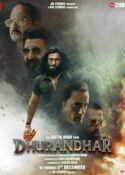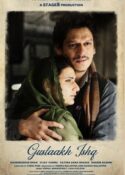 In another feature as part of his This Day That Year series, Subhash K Jha looks at Rajiv Rai’s Pyaar Ishq Aur Mohabbat which released in 2001.
In another feature as part of his This Day That Year series, Subhash K Jha looks at Rajiv Rai’s Pyaar Ishq Aur Mohabbat which released in 2001.
Rajiv Rai whose earlier techno-savvy products like Tridev and Mohra created a psychedelic stampede in the theatres, leaves us with mixed feeling about his latest film. Pyaar Ishq Aur Mohabbat is Rai’s mellowest effort to date. Never before has the snowcapped splendour of the by-now cliched Alpine summits in Switzerland been captured with so much emotion and passion.
Right away, full credit must go to Rai’s cinematographer P.S. Vinod for giving Pyar Ishq … a richly textured almost-fairytale look of Scottish wonderment and Swiss sensuality. The lyrical quality that Rai’s well-written-in-parts screenplay endeavours to represent through its quadrangular romance is far more eloquent in the visuals.
Not that the film lacks finer, delicate moments. Rai’s aesthetically appealing work demonstrates a grasp over the poetry of the heart in key sequences such as the one when the billionaire-suitor Yash Sabbarwal (Sunil Shetty) takes the love of his life Isha (Keerthy Reddy) out to dinner, only to run into the gold-digger Gaurav (debutant Arjun Rampal) who was instrumental in bringing them together. In their mutedly resonant suggestions, moments such as the one above display a new sensitive and subtle side to Rajiv Rai. However, the film finally becomes a casualty of too many meandering encounters and pointless confrontations which, though crisply edited, render the central romance uninteresting.
A film’s success depends entirely on how much the audience comes to care about the central characters. In Rajiv Rai’s film, the characters seem pleasantly rooted to their stunning landscape. In its fusion of inner and outer landscapes, Pyaar Ishq Aur Mohabbat is almost like a dream flowing smoothly through a series of maturely worded, intelligently designed sequences , and some truly innovative and ear-friendly songs by Rai’s permanent composer Viju Shah.
Among the plethora of good bad and indifferent performers debutant Arjun Rampal stands out, not so much for his inherent strengths as an actor(which need plenty of sharpening and re-designing) but because he plays the powerful author-backed Bachchanesque role of an immoral material- guy whose conscience is prodded awake when he falls in love with the girl he has been hired to woo and reject. The way he has been projected and presented as the dejected loner amidst a bustle of speeding subways in the song Main bewafaa, is unforgettable.
Sunil Shetty as the love-stuck billionaire reprises a bit of his Dhadkan role and some of Himanshu Mallik’s part as the lonely Richie Rich in Anubhav Sinha’s recent romantic quadrangle Tum Bin. While Mallik played the part of the spurned suitor with heartbreaking vulnerability, Shetty lets the snarl and cigar do all the talking. Luckily the performance doesn’t go up in smoke.
Aftab Shivdasani as the third suitor is caught in a thankless role which he plays ungratefully. He needs to work on his body language, immediately. Other than a string of zombie-like character actors who play parents as though they couldn’t care less about their love-smitten children, the narration’s other main hurdle is the leading lady Keerti Reddy.
While trying to appreciate her rather limited repertoire of emotional expressions , we also try to make sense of the film’s three heroes blind infatuation for her. Evidently, they see something that we don’t. Ms Reddy’s costume designer isn’t of much help either, dressing her up in cleavage and mid-riff revealing ghagra-cholis at below-zero temperatures in Switzerland.
Rai’s rich visual contexts are supported by a plot that’s almost like a version of a Shakespearean comedy of errors, capped by a ‘neat’ ending where even the rejected suitors get a girl each. Except perhaps the less patient sections of the audience, everyone goes home happy.








